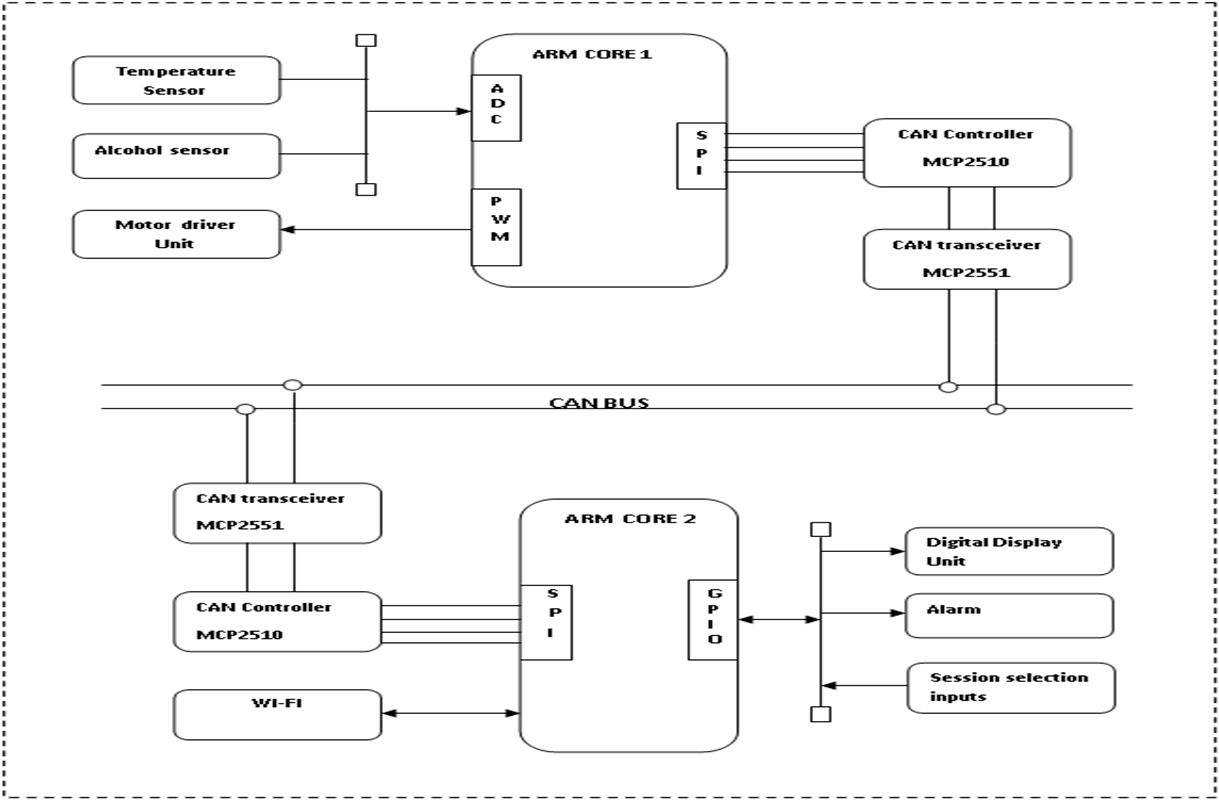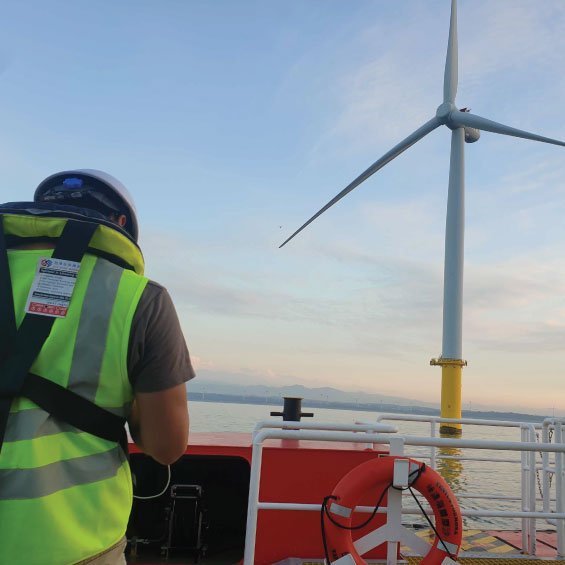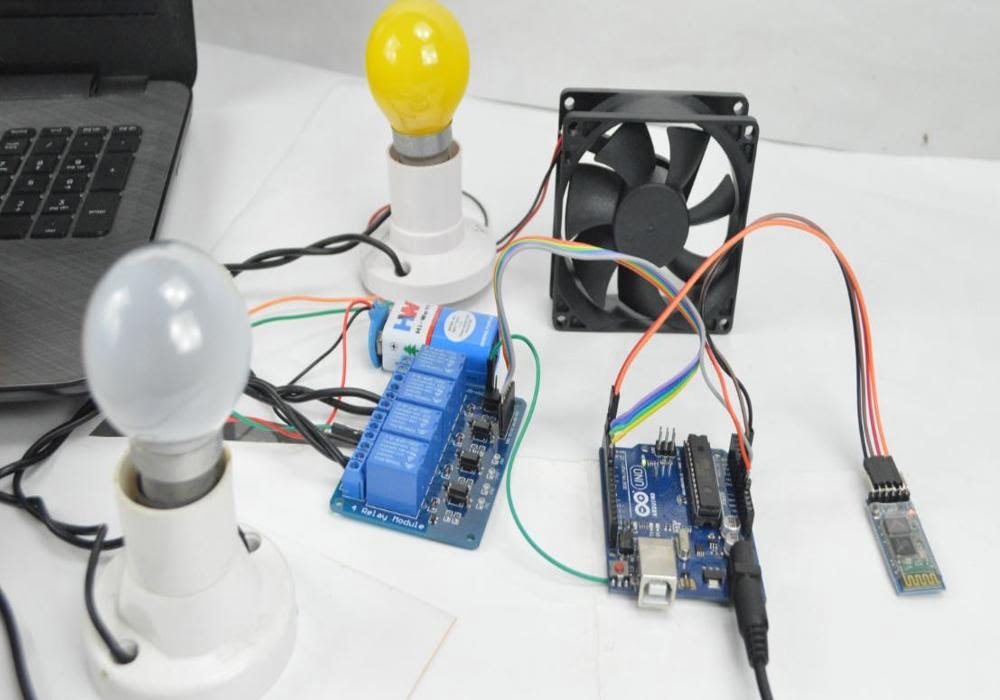Description
A Can Bus Based Monitoring And Fault Diagnosis In Wind Turbine
This paper is a CAN-based architecture designed for the purpose of monitoring and fault diagnosis of wind turbines. CAN is a Message-based protocol designed specifically for Automotive, later Aerospace, Industrial automation, and Medical equipment. CAN interface module is used to communicate the monitored parameters between the wind turbine and the control center. During the transmission of the data from one node to another node, a disturbance occurs. To avoid these disturbances we propose the CAN protocol.
A Can Bus Based Monitoring And Fault Diagnosis In Wind Turbine
INTRODUCTION
In this project, we declare the system with ARM and CAN protocol to monitor and diagnose the problems in the wind turbine application. The project deals with the data transmission between two units at the exact time without any disturbance. The data transmission time is increased with the CAN protocol. ARM core1 runs with CAN and LPC2148 as wind turbine units to which sensors are connected and ARM core2 as Fault diagnosis and monitoring section. A discussion about weather condition (WC) monitoring and generation voltage (GV) display is also added to this design. The data acquisition node collects the sensor data through the CAN protocol. The basic view of this technique is to reduce the possibility of fault diagnosis and increase the monitoring of wind turbines.
A Can Bus Based Monitoring And Fault Diagnosis In Wind Turbine
EXISTING SYSTEM
- Manual operation.
- Automatic turbine power ON/OFF control
- No indication
DISADVANTAGES
- Less effective
- Requires manpower
- No accurate fault detection
- More expensive
A Can Bus Based Monitoring And Fault Diagnosis In Wind Turbine
PROPOSED SYSTEM
- High-Speed Communication Protocol (CAN)
- Turbine rotation speed measurement
- Temperature-based fan controller
- Data acquisition unit in the monitoring section
- Vibration detection
ADVANTAGES
- Low-cost implementation
- Accuracy of output is increased
- More sensors interfaced in the proposed system than in existing systems
- High-speed communication used
BLOCK DIAGRAM
WIND TURBINE UNIT AND FAULT DIAGNOSIS UNIT

BLOCK DIAGRAM EXPLANATION
ARM LPC2148 is a microcontroller that acts as the heart of this system. Sensors and other components are interfaced with this microcontroller. There are 2 units in this block diagram: a wind turbine unit and a fault diagnosis unit. Using CAN protocol communication is done between these units.
HARDWARE REQUIREMENTS
- ARM LPC2148
- Alcohol sensor
- MEMS Accelerometer
- LCD 16×2
- Temperature sensor(DHT11)
- Alarm(Buzzer)
- CAN controller MCP2510
SOFTWARE REQUIREMENTS
- Compiler (KEIL IDE)
- Orcad design
- Programmers (Flash Magic)
- Programming Language: Embedded C
REFERENCE
[1] Wang Chuan Network Center of Changchun Normal University, Remote Monitoring and Diagnosis System for Wind Turbine.
[2] Wenyi Liu, Baoping Tang, Yonghua Jiang, status and problems of wind turbine structural health monitoring techniques in china, 1ST National conference 2009, vol. 35, no. 7, pp. l4l4-l4l8, July 20l0.
[3] .I. Vibrant and L.Bertling, Survey of failures in Windpower systems with a focus on Swedish wind power plants during 1997 – 2005, IEEE transactions on Energy Conversion, vol. 22, no, 1, pp. 167-173, March 2007.
[4] .I.Nilsson and L.Bertling, Maintenance management of wind power systems using condition monitoring systems life cycle cost analysis for two case studies, IEEE transactions on Energy Conversion, vol. 22, no. 1, pp. 223-229, March 2007
[5] Fang Li, Lifang Wang, Chenglin Liao, CAN (Controller Area Network) Bus Communication system Based on Matlab/Simul ink. Available: http://www.ieeexplore.ieee.org.



































































































































































































































































































































































































































































































































































































































































































































































































































































































































































































































































Customer Reviews
There are no reviews yet.